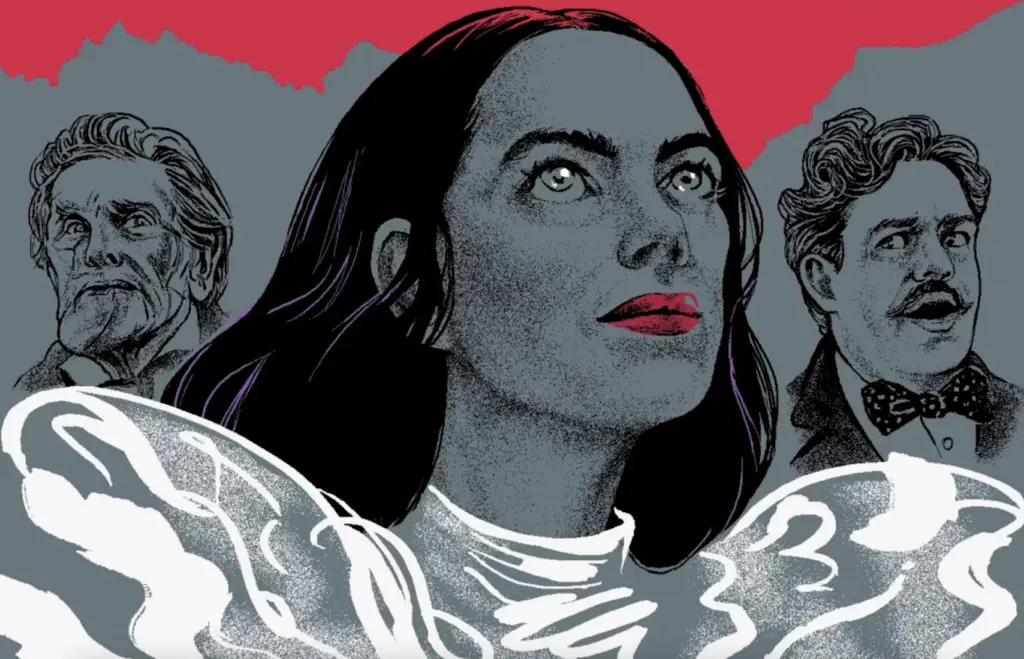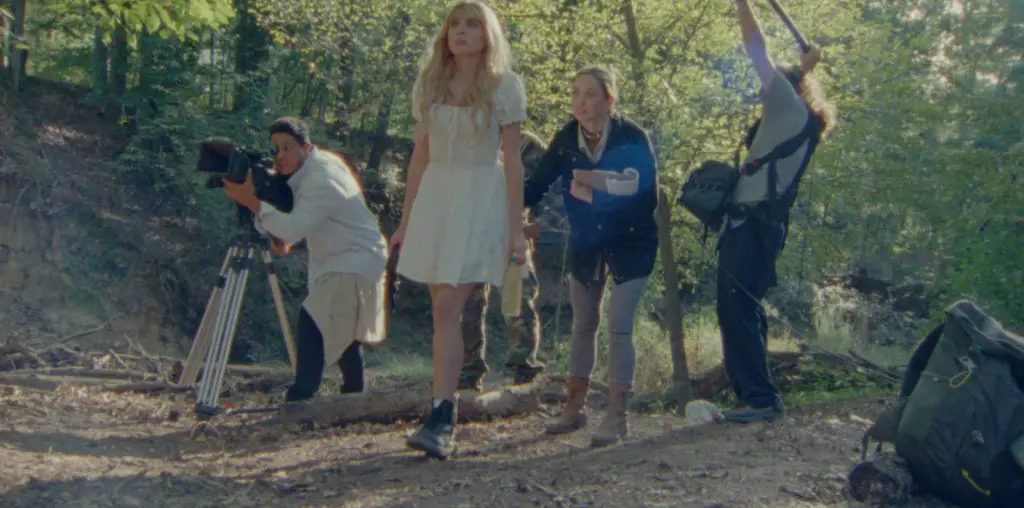
In Look At Me, writer, director, and star Taylor Olson takes viewers on a fictionalized autobiographical journey as a struggling actor dealing with an eating disorder that wastes away every relationship he has. This includes the most important one, his relationship with himself. This Jim Jarmusch/John Cassavetes character study delves into the impulsivity, mania, and anxiety that drives addiction.
We are taken inside the mind of Taylor (Olson), where the personification of his addiction speaks to him aggressively throughout. This angry voice manipulates Taylor to give in to his impulses. He struggles to make basic conversation with people, often making jokes and movie references, leading to surface-level interactions with the people he meets. Taylor’s hunger for success, pleasure, and acceptance leads him down a self-destructive path that separates him from his friends and family. Ultimately, he’s left with no choice but to face the inner Taylor before his life is completely lost.
Look At Me effectively creates anxiety in the audience. It’s uncomfortable, jarring in its editing, charming, hopeful, bleak, and succeeds in putting the viewer in Taylor’s emotional state. Watching this film is the equivalent of having the coffee jitters, similar to Paul Thomas Anderson’s Punch Drunk Love. It also speaks to the detached social media/instant gratification age we currently live in. There’s now an entire generation who wants to be famous, swiping through their days and relationships, becoming simply a body to be used rather than a soul that requires growth and self-reflection. We have “community” at our fingertips, and yet never has a generation dealt with more social anxiety, depression, and suicide.

“Taylor’s hunger for success, pleasure, and acceptance leads him down a self-destructive path…”
Food, sex, drugs, and social media can all be used to cope and mask any uncomfortable feelings that we don’t want to deal with. In the movie, Taylor considers himself a porcupine who is afraid to get close to anyone because of his quills. His therapist logically counters that porcupines are still able to mate and have babies despite their sharp exteriors. There’s no avoiding pain in life. This interaction reminded me of Mel Gibson’s advice to Robert Downey Jr. when he was struggling with addiction. He needed to embrace the part of his soul that was ugly and “hug the cactus.” The idea is that if you hug the cactus long enough, you will receive humility, and your life will take on new meaning.
The biggest issue I have with Look At Me is the opening disclaimer. The disclaimer warns viewers they will be watching a flick depicting eating disorders but also warns about a “deeply insecure male protagonist, which some viewers may find disturbing.” It even suggested people step out of the theater or pause the drama if needed. Nothing that follows in the film demands this heavy of an opening disclaimer. I understand if, at the end of the movie, you want to provide some resources for people struggling with eating disorders, but putting it in the beginning comes across more as parody than necessary. It led me to think, for the first few minutes, that this was going to be a comedy about how our society walks on eggshells to avoid triggering anyone.
It took me a few minutes to shake off the childproofing that had been put in place from the start. Trust that people can handle watching a movie. Don’t influence them to feel a certain way before it even begins. This moment feels like Olson saying, “LOOK AT ME; I made an important movie.” But, overall, Look At Me takes what is often considered and dismissed as a “female problem” and presents an engaging and well-shot story that both men and women will hopefully be encouraged to seek help and hug the cactus.

"…an engaging and well-shot story..."


